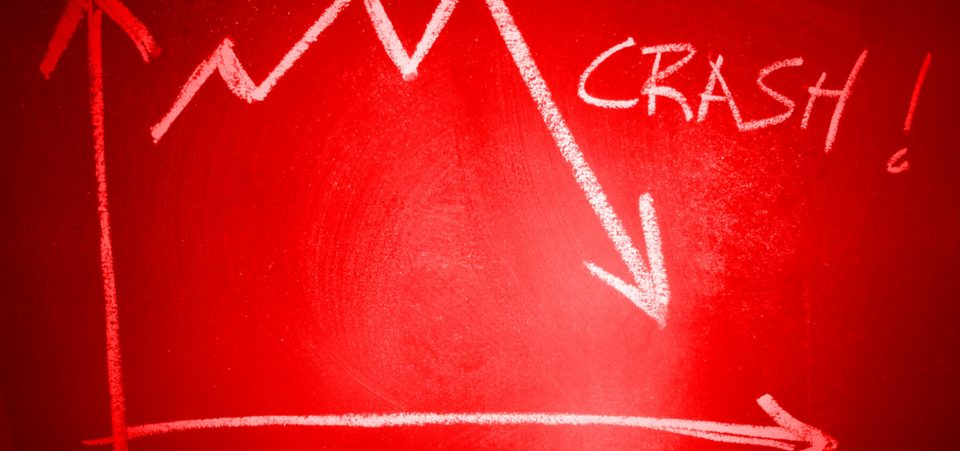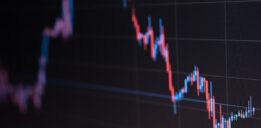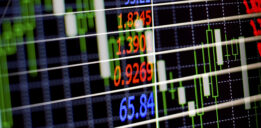This Could Trigger a Stock Market Crash
The Dow Jones Industrial Average (DJIA) broke through the 20,000 barrier for the first time on January 25, 2017 as investor optimism about President Trump’s economic strategies take hold, but the possibility of a stock market crash is looming overhead.
The Dow finally broke the arbitrary—but psychologically important—mark, after infrastructure stocks rose before the markets open. Stocks rallied sharply after Donald Trump won the U.S. election back in November, but lost steam in the weeks before Trump took office, as investors waited to see what a Trump presidency would look like. They didn’t have to wait long.
In the first three days of his first full week in the Oval Office, Trump signed a number of executive orders. On January 25, Trump signed an executive order to start building a wall between the U.S. and Mexico. On the election trail, Trump campaigned on a promise to build said wall and spend $1.0 trillion on infrastructure. (Source: “Trump to order construction of border wall, boosting deportations,” CNN, January 25, 2017.)
Earlier in the week, Trump officially withdrew the U.S. from the Trans-Pacific Partnership (TPP) and advanced the previously stalled Keystone XL and Dakota Access pipelines.
So far, investors like what they hear. The DOW rallied and hit a record intra-day high of 20,082. The S&P 500 also surged to a record intra-day high of 2,297.09.
President Trump took a moment out of his busy day to congratulate the DOW’s new milestone on Twitter, simply calling it “Great!” (Source: “Twitter post,” President Trump, January 25, 2017.)
Stock Market Correction Coming into Focus
While there is a lot of debate about whether the Dow breaching the 20,000 milestone is really all that meaningful (it’s just a big round number after all), what is not open for debate is that the Dow—and the more broadly followed S&P 500—are even more overvalued than they were before.
Recall if you will, during the first presidential debate, Donald Trump said that the long-in-the-tooth bull market was “in a big fat ugly bubble.” In April 2016, Trump said he had little faith in the stock market, and that it was a terrible time to invest because a huge recession was coming. In June, Trump sold all his positions. (Source: “In a revealing interview, Trump predicts a ‘massive recession’ but intends to eliminate the national debt in 8 years,” The Washington Post, April 2, 2016.)
So it’s curious as to why Donald Trump would hail the new Dow milestone. It’s not as if revenue and earnings have been great over the last couple of years. If anything, they have been, for the most part, underwhelming, with the S&P 500 only recently emerging from the longest earnings recession on record.
This should cause investors some concern. After all, stock market levels are a reflection of earnings and valuations. Despite weak earnings growth, valuations are sky-high. Eventually, there will be a correction. It might come from abysmal back-to-back earnings, weak economic data, or geopolitical tensions. It could even come from a lack of anything to celebrate.
But a stock market crash is coming.
The geriatric bull market is lumbering along, but it isn’t supported by anything other than a promise for better times. This illusion has, according to the Case-Shiller cyclically adjusted price-to-earnings (CAPE) ratio, made the S&P 500 overvalued by 77.68%. The ratio currently stands at 28.44, and the 10-year average is around 16. The ratio has only been higher twice, for longer: in 2000 and 2007. Each time, it was followed by a stock market crash. (Source: “Online Data Robert Shiller,” Yale University, last accessed January 25, 2017.)
Admittedly, the exact timing for a correction or crash is open for debate. And it wouldn’t exactly be wise for investors to sit on the sidelines just yet. There is just too much optimism around President Trump right now.
By all means, celebrate the Dow 20,000 and the S&P 500 2,500 (when it comes), but make sure it’s based on solid valuations. Otherwise, brace yourselves for a stock market crash.






